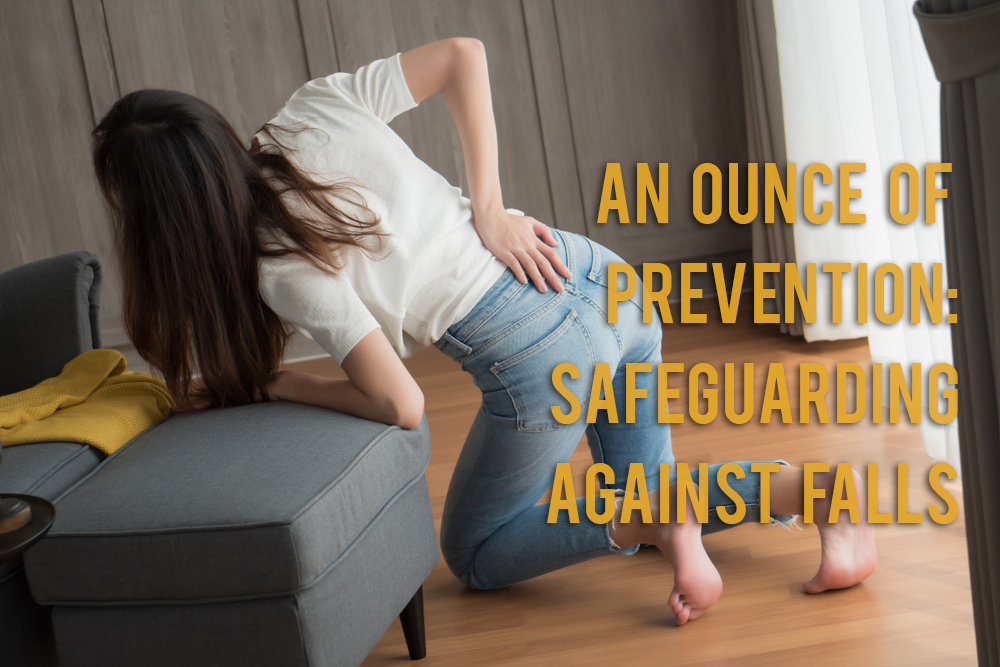According to the National Center on Aging (NCOA), one in four older Americans (age 65+) will fall each year. While falls are the leading cause of both fatal and non-fatal injuries within this age group, every age is susceptible to them. It’s important to be aware of the leading contributing factors and key ways to identify your risks.
A Pound of Cure
The easiest way to treat a fall is to prevent one from occurring. Review the topics below to determine if there is anything you can address now rather than later.
Gait and Balance: As adults become less active, issues often arise with balance, coordination, and flexibility. Keep active to stay healthy concentrating on maintaining lean and toned muscles.
Vision: As we age, less light reaches our retinas making distinguishing between contrasting edges more difficult. Maintaining good eye health with foods rich in eye-nutrients such as carrots, kale, and salmon is a good start. Keeping up with your yearly eye exams is another way to ensure clear vision.
Medications: Most all prescription and over-the-counter medications have side effects that can increase our fall risk. Medications that attribute to this include those intended to treat blood pressure, allergies and even some antidepressants. Always read your medication labels and make sure your drugs are safe to take together – one medication alone may not have a dizzying effect but taken with another, it may.
Environment: Not making simple modifications around our homes can significantly increase our fall risk. Fixing a loose step, keeping cords and small objects off the floor and increasing lighting in dark areas can all help to keep you on your feet.
4 Steps in The Right Direction
1. Get A Yearly Physical – Keeping up to date on annual exams is one of the best preventative measures that you can take for yourself. Make the time to schedule health and vision screenings and use the opportunity to address questions with your doctors.
2. Survey Your Home – Taking a visual assessment of your home for barriers and obstacles is a great way to identify potential walking hazards. Kitchens and bathrooms may seem like obvious places to start but don’t overlook areas like bedrooms or living rooms. Even unsecured rugs or poorly fitted bed skirts pose a danger. Make a list of things to address and don’t procrastinate in correcting them.
3. Take Stability Seriously – Don’t overestimate your coordination or balance and find yourself hurt. Always use proper body mechanics when lifting yourself to your feet.
4. Keep Up Healthy Habits (or, establish them!) – We know that eating well provides essential nutrients to keep our minds clear and vision sharp. And, staying active keeps our body weight down and can prevent some diseases such as diabetes. Maintaining or establishing good habits is likely one of the best ways we can avoid some of the most common contributors to falls.
It’s estimated that over one-quarter of reported falls are entirely avoidable. The CDC has valuable information on their website including important fall Prevention Facts, and the NCOA offers details on Debunking the Myths of Older Adults and Falls. Familiarize yourself with the resources available and use it to make effective choices to keep you on your feet!


0 Comments